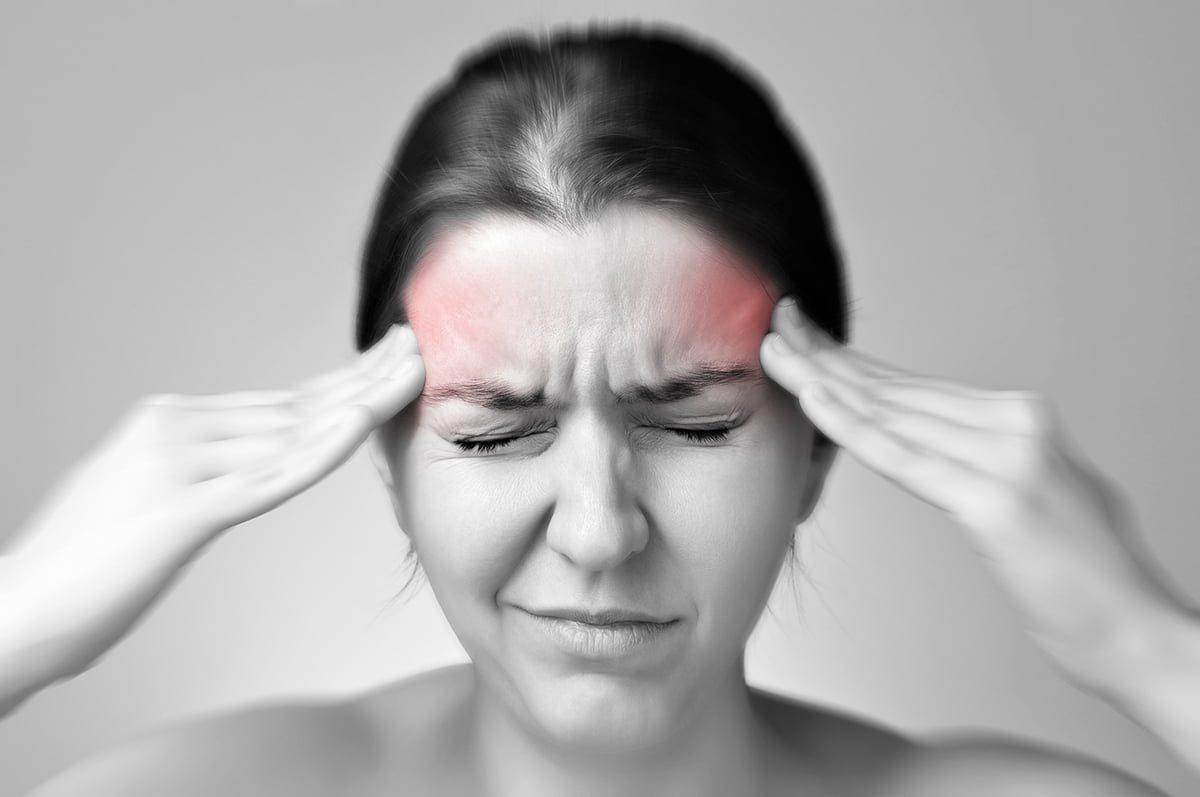
Neuropathic Pain
Severe Postherpetic Neuralgia Relieved by Topical Gabapentin
Herpes zoster reactivation, shingles, affects 0.2% of the population and postherpetic neuralgia (PHN) occurs in 10 -15% of patients following an episode of shingles, with the greatest risk in the elderly. A retrospective review involved 23 consecutive patients attending a tertiary complex pain clinic (University Hospital of Wales, Cardiff and Vale University Local Health Board), who were treated with topical gabapentin gel.
Multiple studies have already demonstrated the efficacy of oral gabapentin in treating chronic neuropathic pain, however efficacy is often limited by dose dependent toxicity. Although this patient population was small, these findings support the use of topical gabapentin in the treatment of PHN and potentially other painful neuropathy.
Br J Dermatol. 2014 Dec 18.
Severe postherpetic neuralgia and other neuropathic pain syndromes alleviated by topical gabapentin
Read NowTopical Analgesics for Neuropathic Pain in the Elderly
Elderly patients exhibit a higher incidence of several neuropathic pain conditions than younger individuals. Systemic treatment of neuropathic pain in the elderly usually requires lower dosing, slower titration, and more monitoring (for efficacy, adverse effects) than in younger patients due to drug factors (altered pharmacokinetics and pharmacodynamics) and patient factors (comorbidities, polypharmacy, frailty). “Despite the availability of several options, treatment of neuropathic pain is not optimal, as medications provide only a partial effect and adverse effects can limit dose escalation, resulting in suboptimal dosing. An often quoted perspective is that less than 50% experience satisfactory pain relief, and side effects are common.”
Summary of perspectives on topical analgesics and relevance to the elderly:
1. Topical analgesics are beneficial in a proportion of those with neuropathic pain, and can produce a degree of analgesia that is comparable with that of oral agents.
2. Topical analgesics are well tolerated, with adverse effects being mainly due to localized skin reactions. Low systemic levels occur following topical administration, and do not contribute to systemic adverse effects or drug interactions.
3. Topical analgesics may be used as alternative analgesics (when systemic analgesics are not tolerated) or as add-on analgesics when an oral agent produces a partial effect (their addition does not increase the side effect burden).
4. Only a limited number of topical analgesics are currently approved, but there is interest in investigational agents that recruit several potential mechanisms of action, and additional options may become available.
5. Topical analgesics have the potential to contribute to improved pain management in the elderly based on their efficacy, adverse effect profile, potential for use as add-on therapies, and potential for oral analgesic-sparing effects with ensuing reduction in adverse effects.
Drugs Aging. 2014 Dec;31(12):853-62.
Topical analgesics for neuropathic pain in the elderly: current and future prospects.
Eur J Pain. 2014 Apr;18(4):465-81.
Read NowTopical analgesics for neuropathic pain: preclinical exploration, clinical validation, future development.
Read NowAmitriptyline/Ketamine for Neuropathic Pruritus and pain secondary to herpes zoster.
Neuropathic pruritus is a complication of herpes zoster which can be either acute or post-infectious when it persists more than 3 months after the rash has healed. In the study, modest control of the pruritus and pain was achieved with continued multimodal therapy and the addition of topical 2% amitriptyline/0.5% ketamine gel.
J Drugs Dermatol. 2015 Feb;14(2):115-8.
Amitriptyline/Ketamine as therapy for neuropathic pruritus and pain secondary to herpes zoster.
Click here to access the PubMed abstract of this article.
Topical therapies and combination preparations may have many advantages over systemically administered analgesics, including the ability to provide effective analgesia with reduced systemic drug levels, a factor particularly beneficial to the elderly. Fewer side effects coupled with convenient and painless administration results in improved patient acceptance and compliance, and ease of use may reduce overall treatment costs. Because they are applied directly to the target site, topical administration can provide therapeutic levels in the tissues under the area of application, with minimal serum levels. Lower systemic drug levels potentially lower the risk of organ toxicity. In addition, first pass hepatic metabolism and other variables associated with the gastrointestinal tract are avoided. Topical therapy is a viable solution which often avoids the need for injections when oral dosing is not feasible because the patient is nauseated or unconscious.
Existing commercially-available treatments may have limited effectiveness and produce relatively frequent adverse effects. Patients often convey that different medications will impart distinct analgesic benefits. Presence of side effects such as insomnia, depression, anxiety, and fatigue can diminish the patient’s quality of life, and justify a change to a customized therapy.
There is a growing body of evidence on the efficacy and safety of topical agents in a variety of pain disorders, including the most prevalent neuropathic pain conditions. The molecular basis for the usage of peripheral analgesics in neuropathic pain and the available clinical trial evidence for a wide variety of topical agents are reviewed in an excellent article by Oscar A. de Leon-Casasola, MD, Department of Anesthesiology and Critical Care Medicine, Roswell Park Cancer Institute, School of Medicine and Biomedical Studies, State University of New York at Buffalo. Agents “that profoundly reduce neurotransmitter release from nociceptors generating ectopic pulses, such as topical local anesthetics and anticonvulsants, may relieve neuropathic pain. Likewise, increased peripheral sensitivity mediated through the release of prostaglandin E2 and substance P at the peripheral level results in spontaneous discharges that may be inhibited by topical drugs, such as nonsteroidal anti-inflammatory drugs (NSAIDs)… Additionally, topical substance P inhibitors and ketamine can reduce the effects of substance P, while sympathetic afferent activation can be modified by the topical administration of a beta-blocker and clonidine. Topical antihistamine may decrease the release of histamine and serotonin, thereby limiting the inflammatory process and hindering vasodilation. Topical opioids can target the opioid receptors present on nociceptive fibers and mast cells. Binding of opioid receptors can inhibit the release of the calcitonin gene-related peptide (CGRP) and substance P from nerves, thereby preventing the feed-forward mechanism of pain that typically results in sensitization at the site of injury (primary hyperalgesia).” Pentoxifylline has effectively provided relief for some neuropathic conditions when applied topically. “Topical tricyclic antidepressants, such as doxepin and amitriptyline, have demonstrated efficacy in a number of neuropathic pain states.”
Neuropathic pain is often resistant to opioids, so other medication classes – such as tricyclic antidepressants, anticonvulsants, and local anesthetics – are often used. Central sensitization, or pain “wind-up”, may perpetuate chronic neuropathic pain even when ongoing peripheral sensory input is absent. Wind-up is thought to cause allodynia, hyperalgesia, and hyperpathia. Receptors such as NMDA, AMPA, and M-glu have recently been identified for their role in central sensitization and antagonists of these receptors have produced pain relief.
The analgesic effect of tricyclic antidepressants is independent of their antidepressant activity and generally occurs at low doses with onset of pain relief in one to two weeks. For example, the analgesic effect of topically applied doxepin hydrochloride in chronic human neuropathic pain was described in a randomized, double-blind, placebo-controlled study of 200 adult patients. Fewer side effects were reported compared with oral administration.
Med Clin North Am. 2007 Jan;91(1):113-24.
Transdermal Lidocaine and Ketamine for Neuropathic Pain: A Study of Effectiveness and Tolerability
Reg Anesth Pain Med 2003 Jul-Aug;28(4):289-93
Read NowTopical amitriptyline in healthy volunteers.
Pain Clin 2000;12(1):47-50. No abstract available. A phase 2b double-blind, randomized, placebo-controlled clinical trial, involving topical gel candidate ARC-4558 for adults with painful diabetic neuropathy produced effective results in relieving the pain.
Read NowTopical Gel to Treat Diabetic Neuropathy Proves Successful in Phase 2
Read NowDextromethorphan/Quinidine for Treatment of Diabetic Neuropathic Pain
Diabetic peripheral neuropathy (DPN) is a common complication of diabetes. The most frequent form, estimated to affect 50% of diabetic patients, is a distal symmetric polyneuropathy. The associated pain, which affects approximately 25% of DPN patients, can be severe and disabling.
In a 13-week, phase 3, randomized double-blind controlled trial, 379 adults with daily symmetric diabetic peripheral neuropathy (DPN) leg pain of 3 months duration received placebo, dextromethorphan/quinidine (DMQ) 45/30 mg, or DMQ 30/30 mg, administered once daily for 7 days and twice daily thereafter. The results of this study demonstrate that DMQ was more effective than placebo in the treatment of DPN pain at both dose levels studied.
Pain Med. 2012 Feb;13(2):243-54.
Efficacy and safety of dextromethorphan/quinidine at two dosage levels for diabetic neuropathic pain: a double-blind, placebo-controlled, multicenter study.
Read NowTopical Glycopyrrolate to Relieve Neuropathic Pain in Lower Extremities
A patient reported that lower extremity sweating was a reliable predictor of soon-to-increase painful “sparking” and burning pain. A trial of topical 2% glycopyrrolate cream (compounded by a community pharmacist) was instituted, based on reports of its use in Frey syndrome. During an episode where both feet were painful and sweating, 2% glycopyrrolate was applied to the most painful foot, and capsaicin 0.25% to the other. The patient found that treatment with 2% glycopyrrolate better alleviated the neuropathic symptoms compared with capsaicin. This case suggests that hyperhidrosis may be an index symptom for an underlying pathobiological driver of neuropathic pain in patients with painful sweating.
Pain Med. 2012 Mar;13(3):484-5.
The beneficial effect of topical glycopyrrolate in a patient with neuropathic lower extremity pain.
This study evaluated the effects of a topical gel containing baclofen 10 mg, amitriptyline HCL 40 mg, and ketamine 20 mg in a pluronic lecithin organogel (BAK-PLO) on numbness, tingling, and pain caused by chemotherapy-induced peripheral neuropathy. The study concluded that BAK-PLO was well tolerated without evidence of systemic toxicity and appeared to somewhat improve symptoms of CIPN. Support Care Cancer. 2011 Jun;19(6):833-41.
Read NowA double-blind, placebo-controlled trial of a topical treatment for chemotherapy-induced peripheral neuropathy: NCCTG trial N06CA.
Study subjects with moderate to severe peripheral neuropathic pain found that use of topical 2% amitriptyline/1% ketamine cream was well tolerated and was associated with long-term reduction in perceived pain. J Pain. 2005 Oct;6(10):644-9.
Read NowTopical amitriptyline and ketamine in neuropathic pain syndromes: an open-label study.
Read NowTopical Clonidine for Diabetic Neuropathy
A phase 2b double-blind, randomized, placebo-controlled clinical trial, showed that a topical clonidine 0.1% gel relieved pain in adults with painful diabetic neuropathy and no serious side effects were reported.
Read NowAmitriptyline/Ketamine Topical Cream for Treating Post-Herpetic Neuralgia (PHN)
Combinations of synergistic drugs can be customized for the patient with chronic pain, and topical or transdermal formulations offer excellent alternatives, sometimes with fewer side effects compared to the same drugs when taken orally. A multicenter, double-blind, randomized, placebo controlled study was conducted to evaluate the efficacy and safety of amitriptyline 4%/ketamine 2% [NP-H] and amitriptyline 2%/ketamine 1% [NP-L] topical creams versus placebo in 251 PHN patients. NP-H was numerically superior to NP-L cream and placebo, and appears to be the optimal concentration for PHN treatment. Less than 5% of subjects who applied NP-H had detectable serum levels of amitriptyline or ketamine.
This study was presented at the 2007 American Pain Society Annual Meeting, Poster #787
The following article discusses the use of topical ketamine 0.5% (5 mg/ml) gel, applied as a thin film two to three times daily over the skin where pain was severe. Topical ketamine reduced pain for patients with postherpetic neuralgia with no systemic side effects.
Neurology 2003;60:1391-1392
Topical ketamine treatment of postherpetic neuralgia
No abstract available. Click here to purchase the full article on line.
The following randomized, double-blind, placebo-controlled study assessed the analgesic efficacy of topical administration of 3.3% doxepin hydrochloride, 0.025% capsaicin or a combination applied daily for 4 weeks in 200 adult patients with chronic neuropathic pain, and reported that all three preparations significantly reduced overall pain.
Br J Clin Pharmacol 2000 Jun;49(6):574-9
Topical application of doxepin hydrochloride, capsaicin and a combination of both produces analgesia in chronic human neuropathic pain: a randomized, double-blind, placebo-controlled study.
Click here to access the PubMed abstract of this article.

Neuropathic Pain FAQ
What Are the Options for Neuropathic Pain Relief?
Customized solutions for neuropathic pain relief are readily available through compounding pharmacies. These pharmacies offer a range of personalized approaches, including tailor-made topical creams, transdermal gels, oral medications, sublingual/buccal formulations, nasal sprays, suppositories, flavor modifications, and combinations of pain-relieving agents. Collaborating with healthcare providers and compounding pharmacists ensures that treatments align with individual patient requirements, especially when conventional options prove inadequate or impractical.
Topical Analgesics for Neuropathic Pain in Elderly
Elderly individuals coping with neuropathic pain can find effective relief with topical analgesics that minimize systemic side effects. Some common options include:
- Capsaicin Cream: Derived from chili peppers, capsaicin creams alleviate neuropathic pain by depleting substance P, a key player in pain transmission.
- Lidocaine Cream: Lidocaine-based creams effectively numb the skin, providing localized relief from neuropathic pain.
- Diclofenac Gel: Diclofenac, a nonsteroidal anti-inflammatory drug (NSAID), is available in topical form to reduce pain and inflammation at the application site.
- Customized Compounded Creams: Compounding pharmacies can craft specialized topical formulations tailored to an elderly patient’s specific neuropathic pain needs. For example, a compounded cream containing a combination of amitriptyline and ketamine may be prescribed for comprehensive neuropathic pain relief.
- Menthol-Based Creams: Creams featuring menthol, such as those containing peppermint or wintergreen, offer a cooling sensation that can alleviate neuropathic pain.
Amitriptyline/Ketamine for Neuropathic Pruritus and Pain Secondary to Herpes Zoster
Amitriptyline/ketamine is a medication combination occasionally employed to manage neuropathic pruritus (itching) and pain associated with herpes zoster, commonly known as shingles. Here’s how these two components work in concert:
- Amitriptyline: This tricyclic antidepressant is also effective in treating neuropathic pain. It alters the balance of neurotransmitters in the brain, including serotonin and norepinephrine, reducing the perception of pain and itching in neuropathic conditions.
- Ketamine: Primarily used as an anesthetic, ketamine has shown promise in managing neuropathic pain at lower doses. It blocks specific receptors in the brain and spinal cord involved in pain signaling.
The combination of amitriptyline and ketamine may provide more comprehensive relief from neuropathic pruritus and pain associated with herpes zoster compared to using either medication alone. Healthcare providers often prescribe this combination therapy when standard treatments yield less favorable results.
Individuals considering this treatment should consult a healthcare provider to assess its appropriateness, discuss potential side effects, and determine suitable dosages for their specific condition.
Do Prescribed Medications for Nerve Pain Work Instantly?
Compounded topical medications for nerve pain, such as creams or gels containing ingredients like lidocaine or capsaicin, can offer relatively rapid relief compared to oral medications. However, the speed and extent of instant relief vary from person to person and depend on several factors:
- Individual Response: The effectiveness of compounded topical medications can vary based on an individual’s pain threshold and the specific formulation.
- Type of Medication: Some topical medications, like lidocaine, quickly numb the skin upon application, while others, such as capsaicin, may require several days or weeks of regular use for full effect.
- Application Site: The location of application influences the speed of relief. Applied directly to the painful area, topical medications provide localized and relatively quick relief.
- Concentration and Formulation: The strength and composition of the compounded topical medication can impact its speed of action. Higher concentrations of active ingredients may provide faster relief.
- Frequency of Application: Some topical medications require frequent or repeated applications to maintain their effects.
While compounded topical medications may offer a faster onset of relief compared to certain oral medications, they are not instant fixes. The degree and speed of relief vary among individuals and depend on the specific product used. It’s crucial to follow your healthcare provider’s instructions for optimal effectiveness in managing nerve pain. If you have concerns about relief speed or the suitability of a compounded topical medication, discuss them with your healthcare provider or the compounding pharmacist.
Can I Fulfil My Anesthetic Prescription Online?
Anesthetic prescriptions follow the same process as other prescriptions. They can be presented in person, faxed by your prescriber, or called in to Pace Pharmacy for processing. Upon receipt, our pharmacy team will contact you (or your patient) to notify you of the prescription’s readiness for pick-up or arrange delivery if an in-person visit to Pace Pharmacy isn’t feasible.



